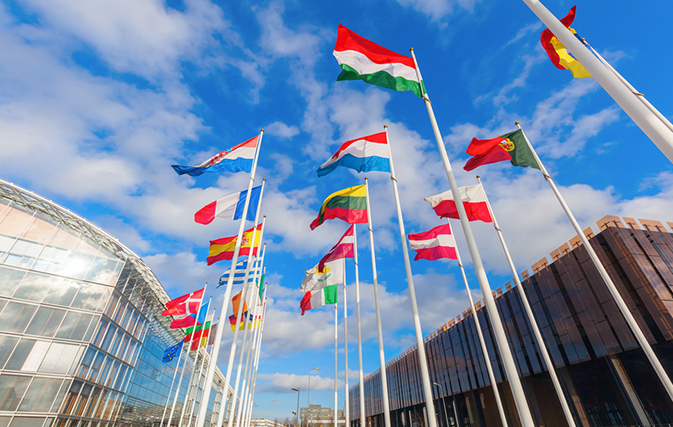BRUSSELS — European Union countries have approved a series of guidelines including a “traffic-light” system aimed at facilitating free movement across the bloc and avoiding further travel disruption during the coronavirus pandemic.
During a meeting in Luxembourg, envoys for the 27 member states agreed on a common approach to travel restrictions and testing to help citizens and workers get more clarity on how they can transit across the continent.
In March, several EU nations hastily closed their borders in an attempt to stop the spread of the virus, even though the EU’s Schengen agreement allows residents to move freely between countries without visas. The action blocked traffic and medical equipment.
“The COVID-19 pandemic has disrupted our daily lives in many ways. Travel restrictions have made it difficult for some of our citizens to get to work, to university or to visit their loved ones,” said Michael Roth, the German minister for Europe. “It is our common duty to ensure co-ordination on any measures which affect free movement and to give our citizens all the information they need when deciding on their travel.”
Member states agreed to provide coronavirus data to the European Centre for Disease Prevention and Control (ECDC), which will publish a weekly map sorting regions according to the severity of coronavirus outbreaks.
The criteria used to define the colored zones — green, orange and red — are the number of newly notified cases per 100,000 in the past 14 days as well as the testing rate and the test positivity rate in the past week.
Member states agreed that they should not restrict free movement of people travelling from or to green areas, but national EU governments will continue to set their own restrictions such as quarantines or mandatory testing upon arrival for people coming from orange or red zones.
A region will be classified as green if the 14-day notification rate is lower than 25 and the test positivity rate below 4%. Under the criteria adopted Tuesday, most EU regions would be either red or orange.
“This agreement avoids border closures and favours the least penalizing health control measures, such as testing,” said Clement Beaune, the French minister for Europe. “Last but not least, essential movements, especially those of frontier workers, will be secured.”
Severely hit by the coronavirus crisis, the aviation sector was less enthusiastic, branding the compromise a “political failure.”
In a statement, aviation bodies ACI Europe, Airlines for Europe and IATA rued that member states didn’t adopt a common pre-departure COVID-19 testing procedure to replace quarantines for passengers travelling from high-risk zones.
“The current lack of co-ordination between member states has killed the nascent recovery of travel and tourism, thus jeopardising millions of jobs associated with the sector,” they said.
The EU council said member states should not deny access to persons travelling from other EU nations and urged them to “respect the differences in the epidemiological situation between orange and red areas and act in a proportionate manner” if they decide to apply restrictions.
EU countries also agreed to provide timely information to their neighbours about new restrictions — if possible 48 hours in advance — and to develop a harmonized passenger locator form for all means of transport.
The guidelines are not legally binding as border controls and health matters remain the responsibility of national governments.
SOURCE: THE ASSOCIATED PRESS
